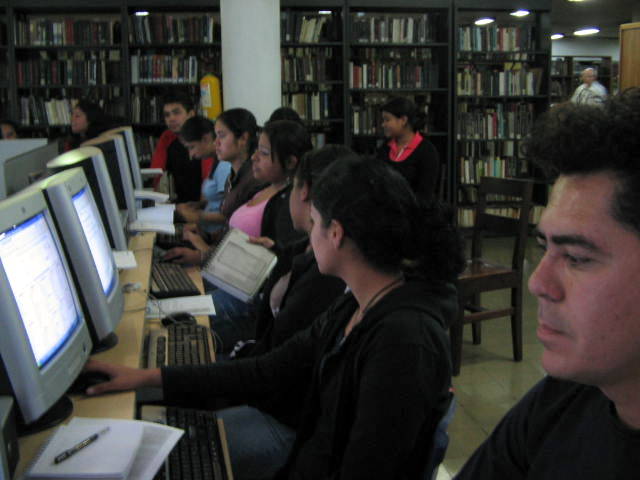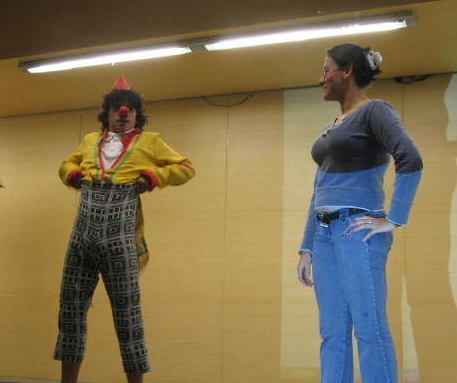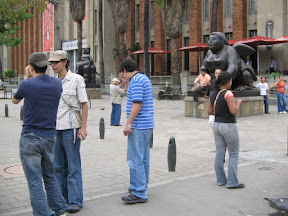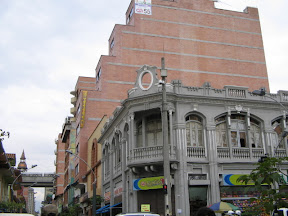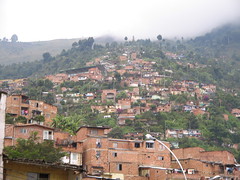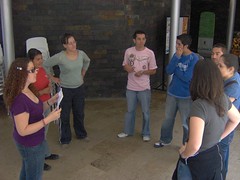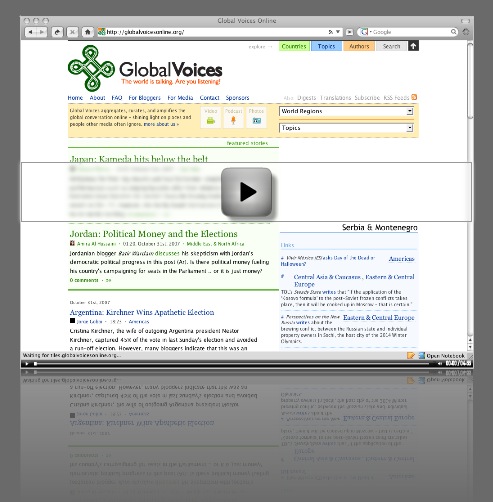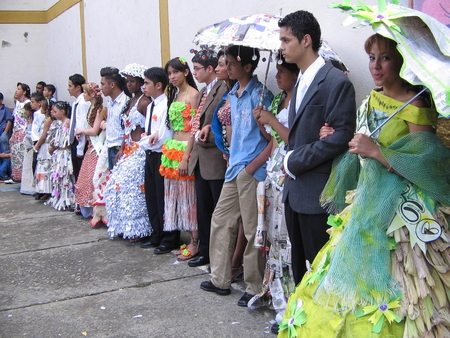At la Loma, the hiperbarrio team has taken it to help out their community member, Manuel Salvador Pizarro Sierra better known as Suso.
First, for a bit of background, we have the feature story written on the Rising Voices blog by David Sasaki:
In San Javier La Loma, a hillside working class community on the outskirts of Medellín, one of the most well-known local celebrities, “Filthy Suso”, had, until recently, also been one of the most enigmatic. Thanks to the work of HiperBarrio, a citizen journalism outreach project of Rising Voices, the story of “Filthy Suso” is now known both locally and internationally. Led by Yuliana Isabel Paniagua Cano, Catalina Restrepo Martínez, and Gabriel Jaime Venegas, the collective of new citizen journalists created both a video and article about “Filthy Suso’, La Loma’s local collector of recyclables. Below are both the video and text, translated from the original Spanish versions. It is worth noting that HiperBarrio’s article on Suso was also published on the front page of the weekly local newspaper, Conexion.
You can read the fully translated article on the Rising Voices blog. The following video was made by the Hiperbarrio participants to document Suso´s history and was subtitled through dot.sub:
Gabriel Jaime writes about a fund raiser which took place last week in their community, trying to gather enough cash to build Suso a deserving home:
Se ha logrado cambiar la imagen empobrecida y miope que se tenia de Manuel Salvador Pizarro por una de reconocimiento, respeto, dignidad y gratitud que merece; al tiempo que se encuentran nuevas significaciones del papel de su familia y el suyo propio en la historia local.
Esta vereda unida por una causa, nos ayuda entender el valor que ha tenido el trabajo comunitario en la construcción del destino de nuestros pueblos.
El día que Suso nos falte, no se ira al olvido, quedara grabado en el imaginario de miles de personas que lo conocen, no solo en su comunidad sino en el mundo entero gracias al Internet, la prensa escrita y al voz a voz que ya convirtió esta historia en el mito de “El Suso”.
Lo más importante de este proceso es que comienza a regenerar el tejido social roto por la violencia que tantos estragos provoca, aun hoy, en la existencia de las personas que habitan esta vereda y que solo sueñan con vivir en paz al lado de su familia y las personas que aman.
We have managed to change the poor and miopic image that people had of Manuel Salvador Pizarro for one of recognition, respect, dignity and well deserved gratitude; at the same time that new meanings are being found of the role his family and himself have played on the local history.
This bourrough which came together for a cause, helped us understand the value that community work has had on the construction of our people's destiny.
The day Suso is no longer with us, he won't be forgotten. He'll be branded on the minds of thousands of people who know of him, not only in his community but throughout the world thanks to Internet, written press and word of mouth which made this story the “Suso” myth.
The most important aspect of this process is that the broken social makeup of our people, damanged by violence which causes so much pain, is being mended. People who'se only desire is to live in peace with their families and the people they love.
Carmen Elena Paniagua, better known for her online nickname of Camela, wrote a beautiful poem in her blog Baúl de Letras in honor of Suso, recording the day his old home was demolished to make room for the new one;
AL FINAL
Por última vez el viento silbará entre lal tapias;
los muros centenarios y leales morirán con sus secretos.
La historia, reducida a meras partículas de polvo, solo quedará grabada en la memoria cansada de un viejo.
Con cada golpe de la almádena, su corazón se estremecerá y evocará un recuerdo; una añoranza de pantalones cortos, de pies descalzos, de bigotes de leche y cocechas de café.
Su mirada parcial, se detendrá dulcemente en un éxode de cucarachas; y de las ruinas rescatará las antiguas llaves de la casa y las guardará en su bolsillo, tal vez para abrir la puerta del pasado en una noche de reminiscencias.
Ya no las paredes desatarán su coloquio en las noches, fidedignos relatos que en el espesor del barro se escondían de la luz del día;
ya no los bacanales de extrovertidos fantasmas;
ya no los abrazos íntimos con la soledad;
ya no las anotaciones que a falta de papel, se esculpían en los muros terrosos.
Ahora solo hay escombros; una vida regada por los suelos; los pedazos de una existencia, que se rompe al final de una honda caída.
IN THE END
For the last time, the wind will blow between the walls,
those centenary and loyal walls will die with their secrets.
History, reduced to mere dust particles, will only remain recorded in the tired memory of an old man.
With each strike of the sledgehammer, his heart will shiver and a memory will come up; yearnings for short pants, bare feet, milk moustaches and coffee picking.
His partial sight will sweetly stop on the cockroach exodus; from the ruins he'll rescue the old keys to his house and will put them in his pocket, perhaps to open a door into the past on a night full of memories.
No more shall the walls untie their evening conversations, faithful stories that hide within the thick mud walls during the daytime;
No more shall the extrovert ghostly parties take place;
No more the intimate hugs with solitude;
no more the note taking that due to a lack of paper were sculpted on the dirt walls.
Now there is only rubble; a life scattered on the ground; pieces of someone's existence bronken at the end of a long fall.
A video taken by David Sasaki when he met Suso can be found on his blog as well.

